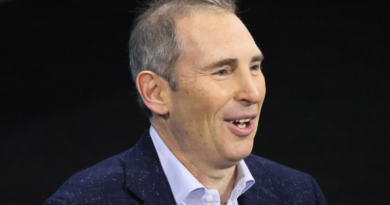Mindfulness leader Jay Shetty shares his 3 hacks to help master your mind and achieve your goals
For decades, researchers have heralded the growth mindset for helping people overcome setbacks, develop grit, and even raise successful kids. Maybe the most appealing is that more than talent and IQ, shifting from a fixed to a growth mindset is a significant predictor of success.
“If you think of anything you’ve ever achieved in your life, it’s because you grew a particular skill or habit or mindset,” Jay Shetty, host of the world’s number one health and wellness podcast On Purpose, tells Fortune.
Coined by renowned psychologist and Stanford professor Carol S. Dweck, Ph.D, a growth mindset helps people see disappointment as an opportunity to grow and learn new skills. Its pillars celebrate curiosity and passion over competition and reward. The idea of thriving in the face of challenges became popularized in Dweck’s 2006 book Mindset: The New Psychology of Success. Since then, leaders in the field have backed this philosophy, including Angela Duckworth’s research on grit and James Clear’s book Atomic Habits. And most recently, Shetty amplifies the idea that we play an active role in achieving our goals.
Shetty—who has interviewed influential voices like Michelle Obama, Tom Holland, and Selena Gomez on overcoming setbacks and finding their voice—believes people too often fault themselves when falling short of a goal or New Year’s resolution.
“We often think it’s because we’re not good enough, we’re not smart enough, we didn’t work hard enough, or we didn’t try enough,” Shetty tells Fortune. “What I’ve learned over time is that, actually, it’s because we didn’t grow the skill, the habit, the mindset, and the discipline that we needed to achieve that goal.”
Luckily, we can shift our mindset and push past hurdles. Shetty, who also serves as the chief purpose officer of Calm, a mental health brand offering meditations and mindfulness tools, will show people how to develop a growth mindset in a new video series called 7 Days of Growth.
Here are his three tips for beginning the path toward growth:
Shift the way we speak to ourselves
Have you ever heard that you are your own worst critic? The everpresent second voice creeps in, trying to guilt us into achieving our goals, Shetty says. It taunts us about how far we are from the finish line, draws comparisons to the legends who came before, and ruminates on all the odds stacked against us.
A growth mindset, however, is about embracing the process of learning and building skills—even knowing when to pivot. We can start by talking to ourselves compassionately, as we would a friend.
“[We are] reframing the voice in our head to be a cheerleader, to be somebody who challenges us, someone who checks in with us, and someone who’s acknowledging the hard work that’s been put into place,” Shetty says. “It’s someone who acknowledges that the process may need to be edited or changed.”
Research found positive self-talk, specifically affirmations, helped ignite the brain’s reward system and lower stress hormones, which can boost people’s confidence. The most powerful affirmations were ones related to people’s values, such as “I love how I prioritize hosting dinner parties with my friends” (even if I burnt the chicken on the last one) or “I am proud of myself for learning how to play pickleball” (even though I feel like I let my partner down this time).
Jamie McCarthy via Getty
Surround ourselves with others on the same path
Shetty says another key to mastering the growth mindset is surrounding ourselves with others who share our values. “Accountability and community is so underrated and underestimated, and I feel it can have the biggest impact,” he says. Sharing our mindset shift with someone who values our desire to grow can keep us committed, even if they don’t have the same goal. Who can encourage us to take that pottery class, learn a new language, or sign up for that first volunteering job? People with a growth mindset can help us focus on the building blocks of our goal and encourage us to see setbacks as part of the process. It doesn’t hurt that we often feel more motivated to show up when we know we may let someone down, too.
And when we secure an accountability partner, studies show we are more likely to make it to the finish line.
“It’s hard to wake up every morning and get to the gym yourself, but if you know your friend is going to be waiting there for you, you’re more likely to show up,” Shetty says.
Set an intention first thing in the morning
With a 24/7 news cycle, unread emails, and the enticing pull of social media validation, it’s far too easy to wake up and immediately get sucked into the chaos. “We’re starting our day not thinking about growth. We’re starting our day thinking about noise, negativity and notifications and what we haven’t done,” Shetty says.
The overwhelm can cause an immediate stress response, which puts our body on high alert and clouds our intentions for growth. Alternatively, setting aside time to breathe and be mindful can help us show up more authentically on any given day. Shetty recommends setting an intention first thing in the morning. It takes less than thirty seconds and reminds us to be present and seek growth opportunities.
“It could be anything from ‘my goal today is to lead with positivity.’ ‘My goal today is to lead with an attitude of gratitude,’ or ‘my approach today is to be present wherever I am,’” Shetty says.
Different online tools —such as the Intelligent Change app, which produces the 5 Minute Journal—can prompt us in the morning to write out three gratitudes and a note about how we will show up for the day. Mental health platforms such as Calm and Headspace have morning meditations, and Shetty hosts the Daily Jay, which can help motivate us to set an intention.
While it may not happen overnight, small steps can impact our mindset and help us live a more fulfilling, rich life in pursuit of our goals. To learn more about mastering the growth mindset, take Shetty’s new week-long program on Calm’s platform.
“What’s beautiful is you’re planting lots of seeds, and you have no idea as to what they’re going to grow into in the future,” Shetty says.



